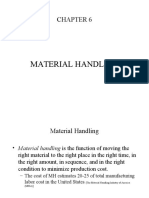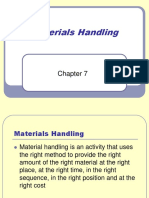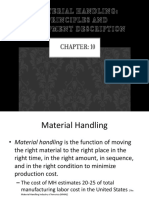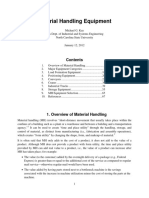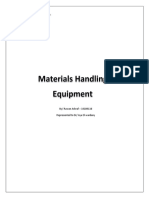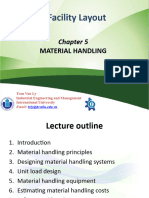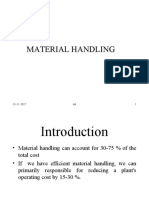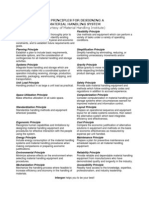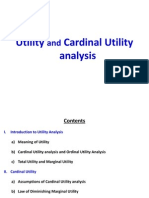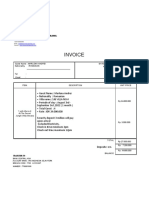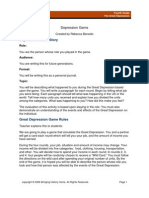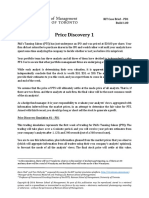0% found this document useful (0 votes)
2 views22 pagesMaterial Handling Part 1 Lecture
The document discusses material handling in manufacturing facilities, emphasizing its importance in productivity and the integration of advanced technologies such as robots and automated systems. It outlines principles for effective material handling system design, including planning, standardization, and ergonomics, as well as classifications and types of equipment used. Additionally, it highlights the significance of unit load design in optimizing material flow and reducing costs.
Uploaded by
asha81613Copyright
© © All Rights Reserved
We take content rights seriously. If you suspect this is your content, claim it here.
Available Formats
Download as PDF, TXT or read online on Scribd
0% found this document useful (0 votes)
2 views22 pagesMaterial Handling Part 1 Lecture
The document discusses material handling in manufacturing facilities, emphasizing its importance in productivity and the integration of advanced technologies such as robots and automated systems. It outlines principles for effective material handling system design, including planning, standardization, and ergonomics, as well as classifications and types of equipment used. Additionally, it highlights the significance of unit load design in optimizing material flow and reducing costs.
Uploaded by
asha81613Copyright
© © All Rights Reserved
We take content rights seriously. If you suspect this is your content, claim it here.
Available Formats
Download as PDF, TXT or read online on Scribd
/ 22

